The photographs that you'll see in this post were taken on Saturday. 27th of August 2022 is the exact date. It wasn't much of a trip. I drove only 25 - 30 kilometers to the fields, woods, and meadows in the area around the town of Vodnjan.
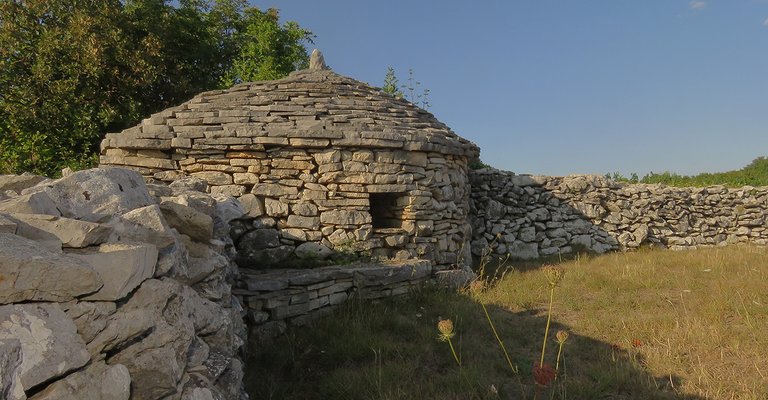
In this opening photograph, you can see a kazun. These small, dry stone buildings which look a bit like igloos made of stones, were traditionally used to store the tools needed for agriculture and as shelters from the rains & storms that can arrive suddenly and be very short.

In many cases, they are built as part of the walls around the fields, pastures, small vineyards, or olive orchards, usually from the stones dug out of that piece of land to make it agriculture-friendly.
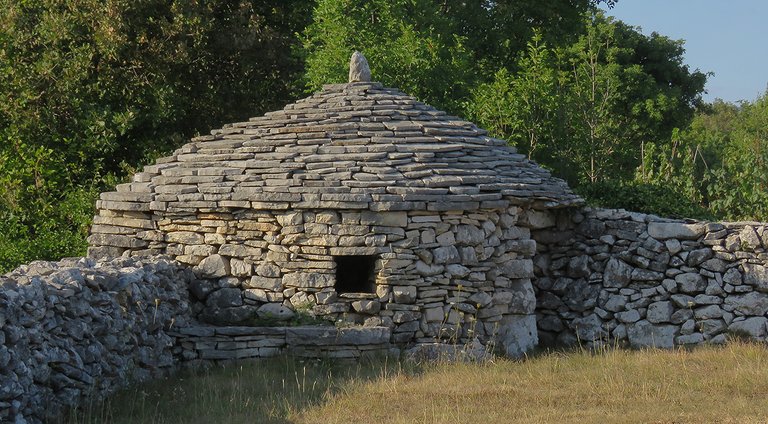
Kazun is one of the most iconic local attractions in my area. You can find this kind of buildings only on the southern end of Istra, the peninsula on which I live. About forty kilometers north of my southern, seaside hometown, the kazun - land ends.
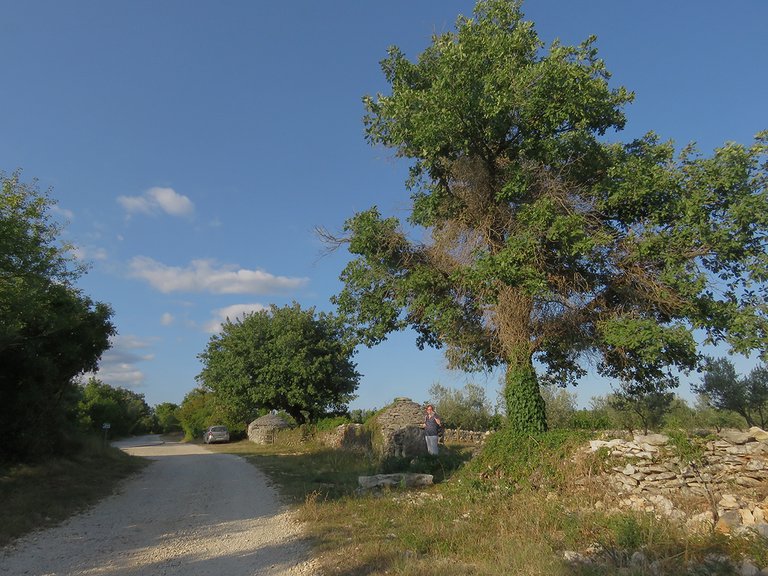
The old wall shown in these photographs has two kazuns. Among the vegetation that grew near and on the wall ...
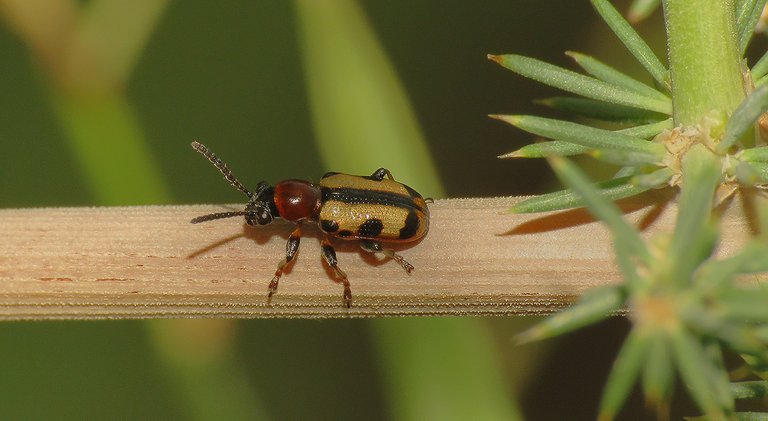
... there was a wild asparagus shrub. Asparagus acutifolius is the scientific name of this specific asparagus species. There, among the thorny leaves, I found a leaf beetle strictly connected to the plant.
This is the Crioceris paracenthesis, an asparagus beetle from the Chrysomelidae family. I already encountered two more common Crioceris species before, but this was my first encounter with the Crioceris paracenthesis. It's very similar to the Crioceris asparagi but is also something new to me and therefore exciting to photograph. It all started with just one beetle, but soon ...
... I was observing what looked like a mating-related action. I'm not completely sure about it, but I'll say that two males are chasing the female, and kinda fighting to get the winning position.
Although I didn't find anything specific about this species through my Internet search, I suppose that Crioceris paracenthesis beetles feed on various parts of the Asparagus acutifolius plant, both in their larval and adult stages, just like the other two Crioceris species present in this area, the Crioceris asparagi, and the Crioceris duodecimpunctata.

After half an hour with asparagus beetles, it was time to leave that place and continue the journey.
Some minutes later and five or six kilometers further, I stopped in a small village whose name I had completely forgotten, to photograph some chicken.

I saw a fairly large homestead ...
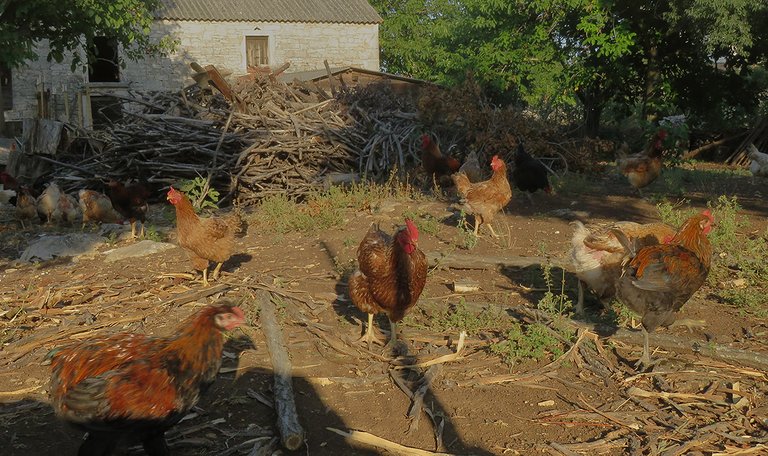
... and many chickens in the yard ...
... so I tried to get a couple of chicken portraits through the fence.
Most chickens were brown. I mean, in various shades of brown.
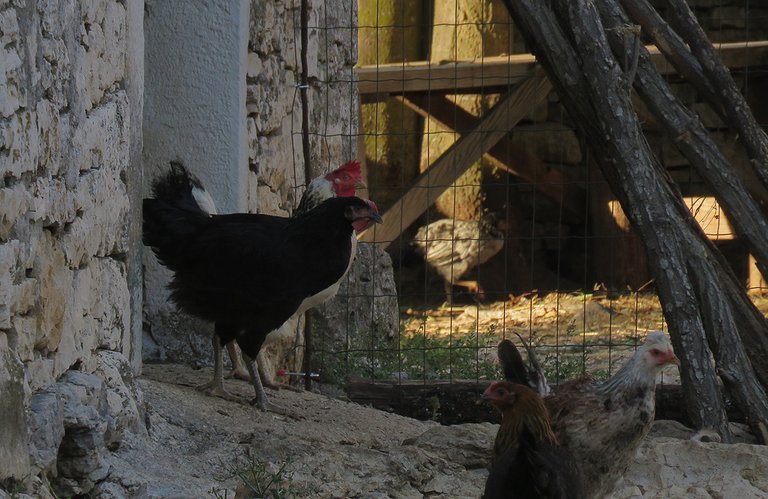
I saw only a couple of black ones.
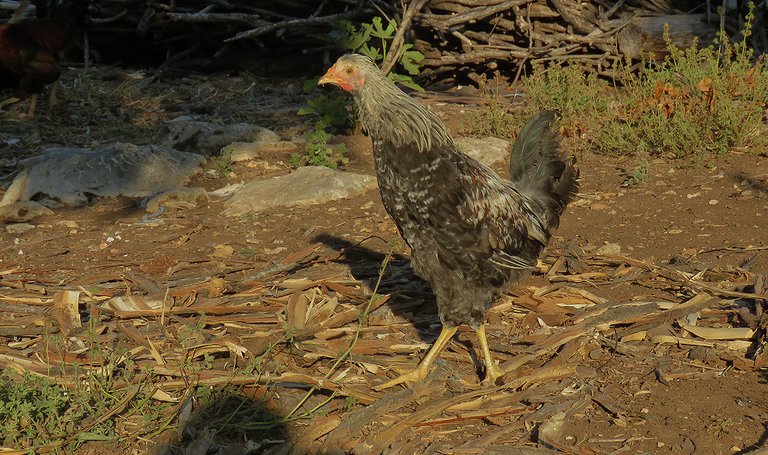
And that's all I can tell you about those chickens.
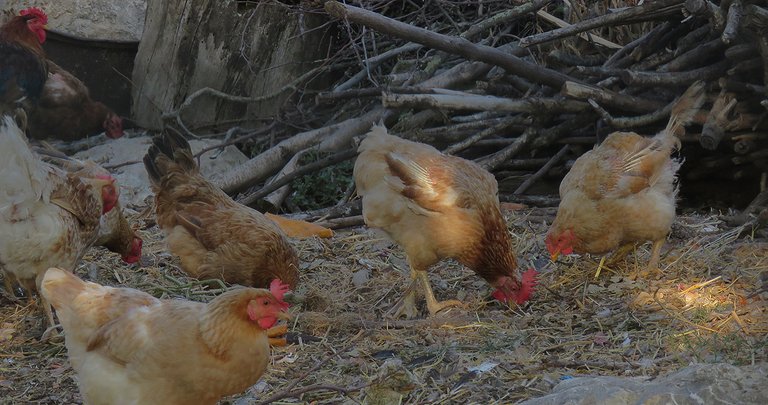
Soon I sat in my car and drove away to see where the road will take me.
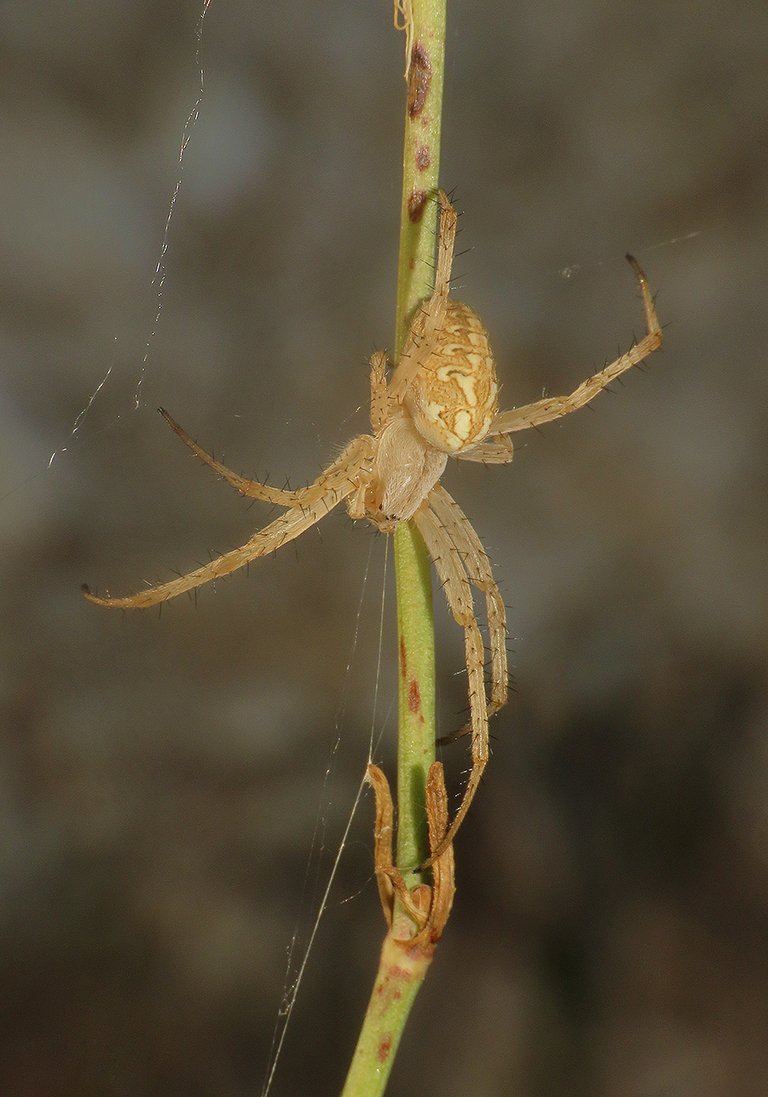
This spider was photographed somewhere along the road, maybe ten or fifteen kilometers from the small village and the chicken farm.
I stopped by the side of the road, in an area with mostly dry herbaceous vegetation.
The spider was nicely camouflaged on the stem of the Cephalaria leucantha plant. It looked like a part of that plant from a distance. Neoscona adianta is the name of this orb-weaver from the Araneidae family.

Here you can see a flowerhead made of many small Cephalaria leucantha flowers.
On a nearby flowerhead, I found another spider. A crab spider this time. A juvenile Thomisus onustus from the Thomisidae family. Although it wasn't easy to spot the Neoscona adianta on the plant's stem, this small crab spider was even better camouflaged on the surface under the flowers.
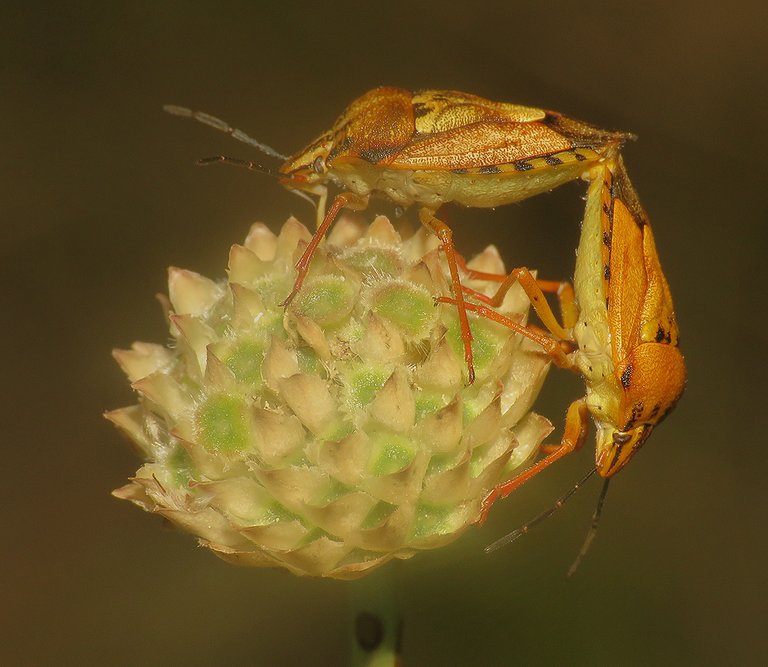
This mating pair of Carpocoris purpureipennis shield bugs was photographed on a flowerhead that has recently lost all its flowers.
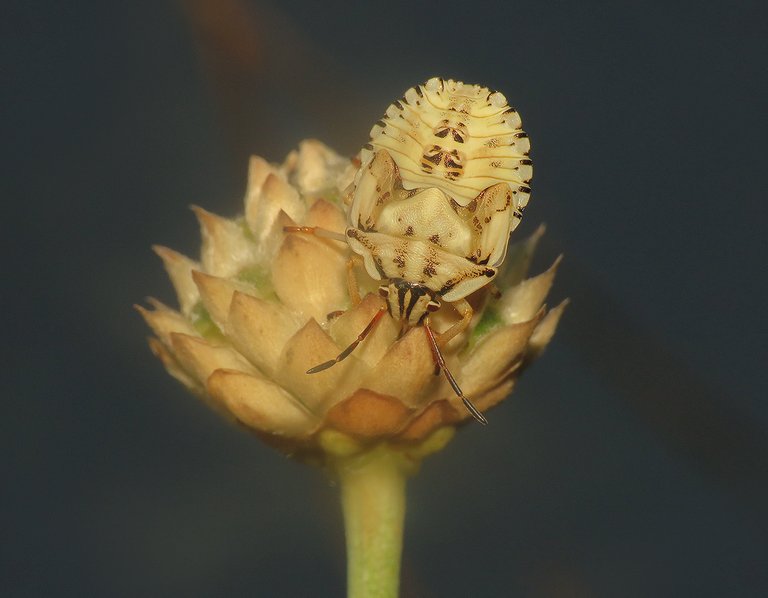
Here you can see the nymph of that species. This is a young wingless Carpocoris purpureipennis bug.
It was photographed on another flowerless Cephalaria leucantha flowerhead.

Here you can see the dried-out, empty seed pods of a plant that I wasn't able to identify. It could be the Alyssum loiseleurii. Or the Alyssum alyssoides. Or the Lepidium ruderale. Or something else.
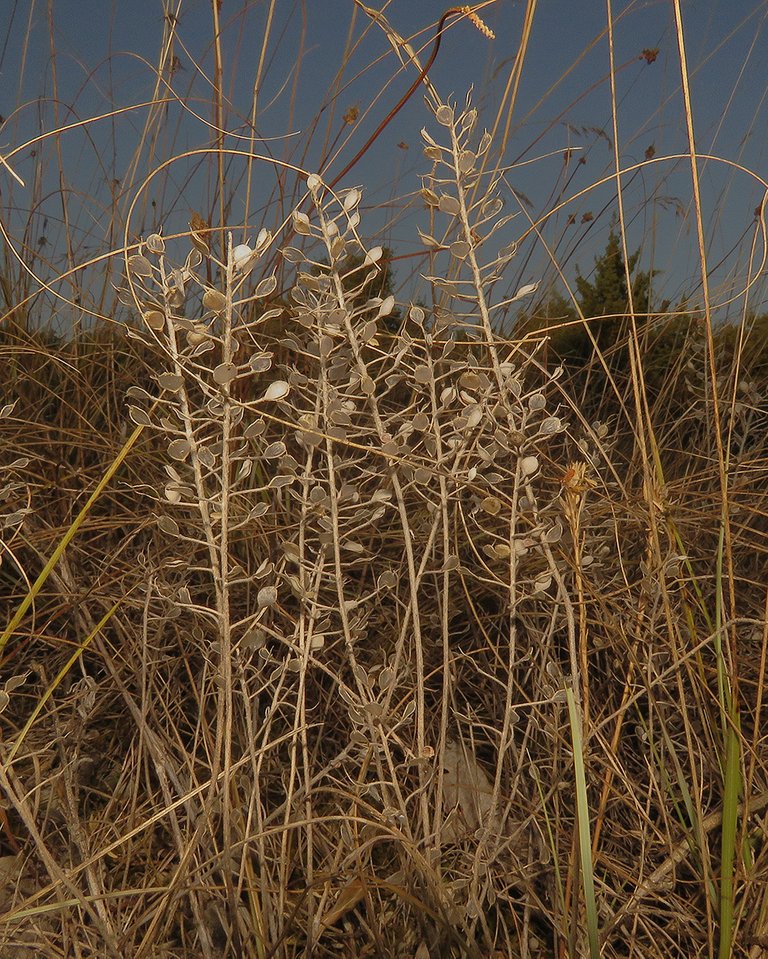
Here you can see a small group of these plants.

I like the shape of these dry stems and translucent seed pods very much.
The following links will take you to the sites with more information about some of the protagonists of this post. I found some stuff about them there.
https://www.google.com/search?q=Crioceris+paracenthesis&sxsrf=ALiCzsbSw98gP5D5sEMoiu7CdXTlSc1Mpw:1666286801467&source=lnms&tbm=isch&sa=X&ved=2ahUKEwitwJSHqu_6AhUGqaQKHR6KBh8Q_AUoAXoECAEQAw&biw=1549&bih=919&dpr=1
https://en.wikipedia.org/wiki/Neoscona_adianta
https://en.wikipedia.org/wiki/Thomisus_onustus
https://en.wikipedia.org/wiki/Carpocoris_purpureipennis
https://identify.plantnet.org/
AND THAT'S IT. AS ALWAYS IN THESE POSTS ON HIVE, THE PHOTOGRAPHS ARE MY WORK - THE END.
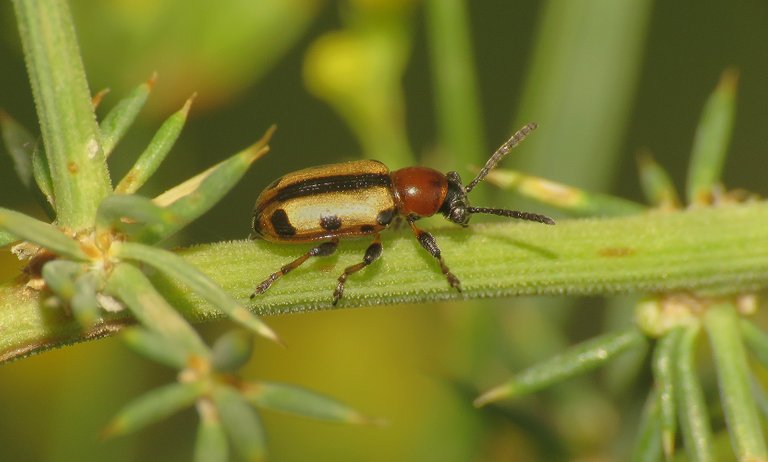
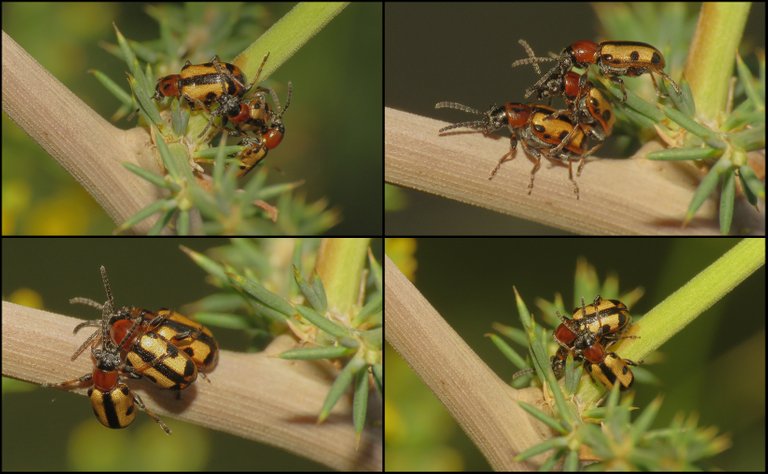
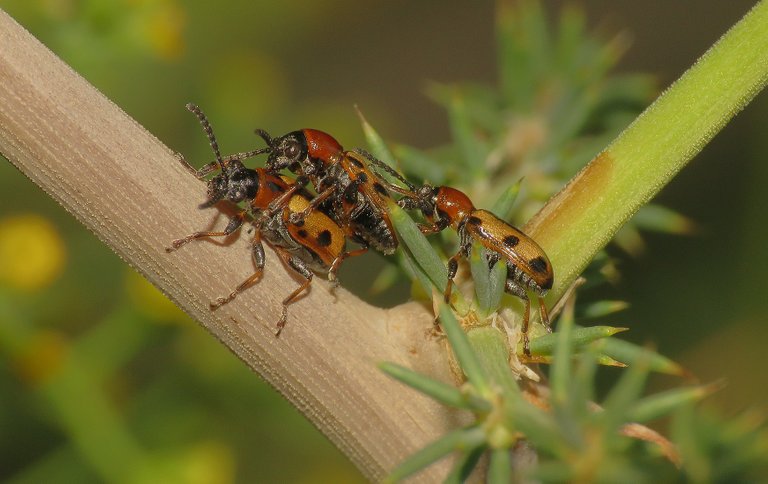
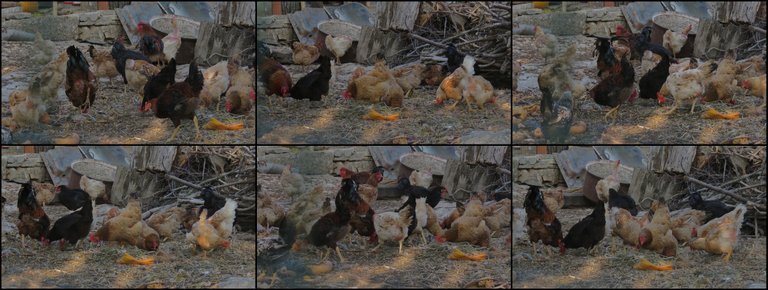

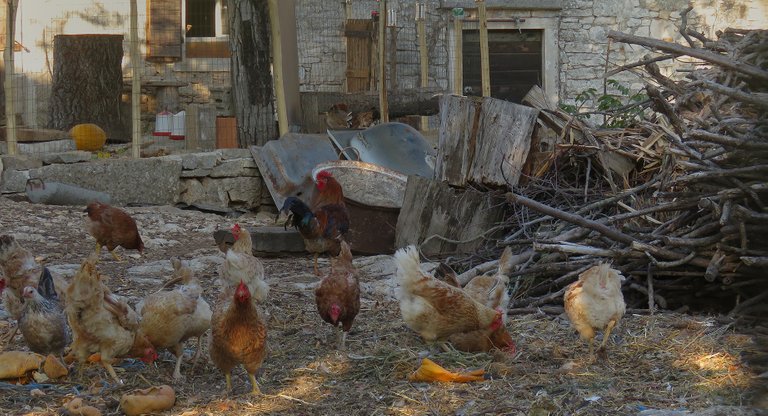
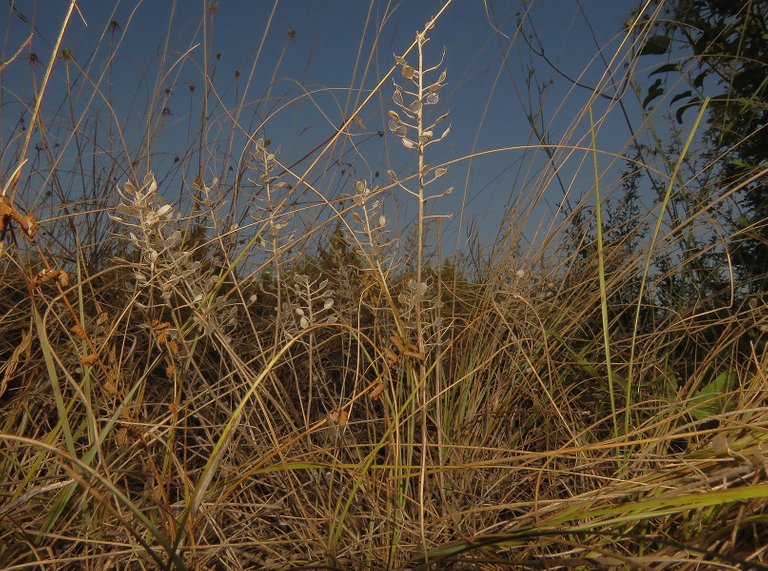

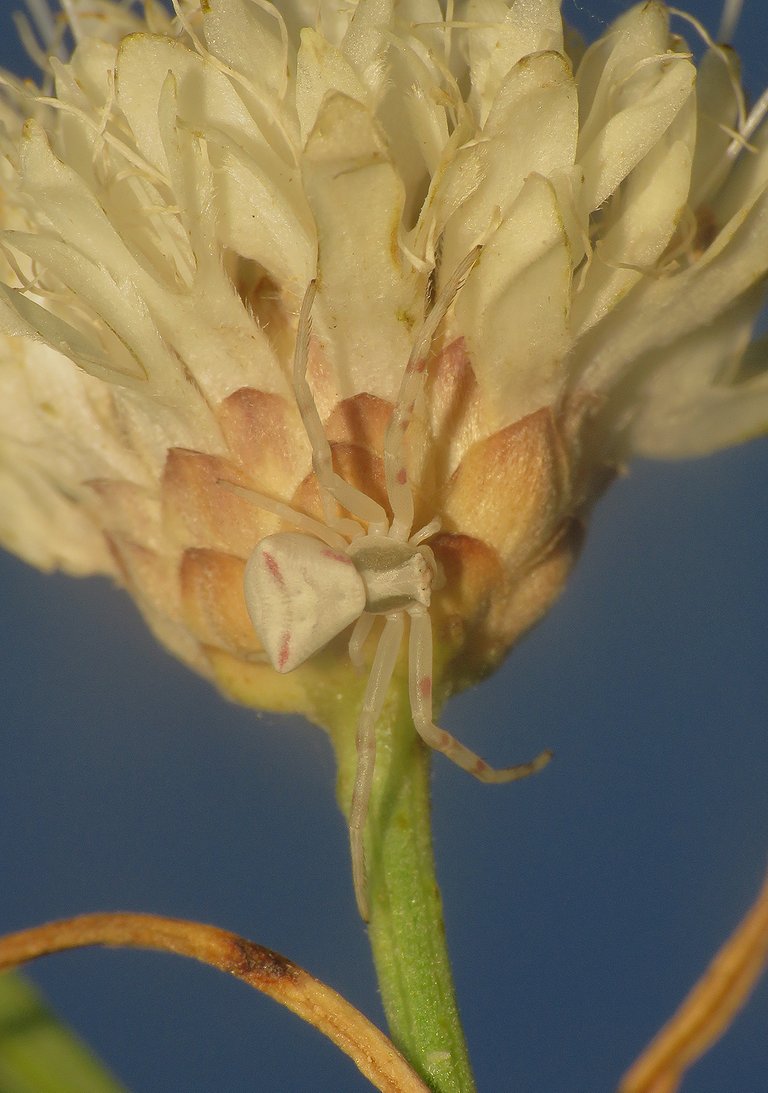
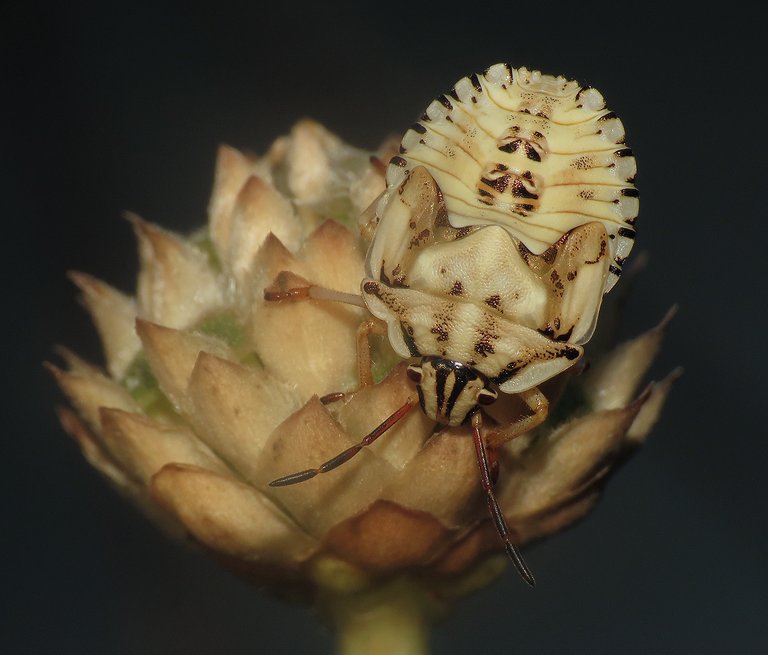
Thank you for sharing this post on HIVE!
Your content got selected by our fellow curator desro & you received a little thank you upvote from our non-profit curation initiative. Your post will be featured in one of our recurring curation compilations which is aiming to offer you a stage to widen your audience within the DIY scene of Hive.
Next time make sure to post / cross-post your creation within the DIYHub community on HIVE and you will receive a higher upvote!
Stay creative & hive on!
Your content has been voted as a part of Encouragement program. Keep up the good work!
Use Ecency daily to boost your growth on platform!
Support Ecency
Vote for new Proposal
Delegate HP and earn more
Congratulations, your post has been upvoted by @dsc-r2cornell, which is the curating account for @R2cornell's Discord Community.
These igloo-like stone constructions are amazing.
Do you know how old it is?
Most of the currently standing ones atre from the 19th and the first half of the 20th century. Some are here from medieval times or earlier. In the Neolithic period, this kind of building was a house, then gradually became a small shelter in the field or a tool shed. Can't tell you how old are the kazuns shown in this post. Since they are often part of the walls and don't require much time and resources to build (stones here abound), they were built and destroyed as the borders of the fields and properties were changing.
Thank you so much for the information, I am fascinated when I see such places.
I've never seen a plant like the last one, it looks like some artificial ornaments with wire trunk and glass leaves.
Yes, it looks a bit like some kind of artifact. Although I don't know which plant exactly is this, I'm pretty sure that when is fresh, green, and covered with leaves & flowers, it has a more conventional look. At this stage, dried out and at the end of their life cycle, these branches can be used for ornaments, I think. They are pretty resilient. They look fragile but can't be broken that easily.
Yes, they look quite resistant. Ok, you must photograph them at another stage of their life to see them hehe.
🙂
Beautiful photos , lovely post my friend @borjan i love how you always focus in the animals, the insects, the birds, the pets, you have a focus in details and that is awesome from you.
i've always said that if i only had a big space in my house i could have a lot of chikens jaja i love them
Yes 🙂chicken is a great egg-producing pet.
yeah that is a side benefit from having chikens as pets!
I quite like those kazuns, they look really beautifully built. Apparently stone wall making and these is an artform that requires a keen eye and a lot of patience.
Those beetles were definitely being rather feisty over that female weren't they? Pretty variety of the aparagus beetle.
Your macros are always impressive.
Those Kazun structures I never seen before in that form. They are pretty and do their job well for storing tools and shelter. Great captures of them.
The beetles are fun to watch and the chickens in the sunlight look like to glow.
Have a great evening further @borjan
Thanks for sharing your captures. 😊👋🏻
This plants look beautiful especially this last one, it looks like it has a shining light radiating from it
the picture that @borjan's friend shows is very good.
Kazun are very cool! New England is renown for stone walls everywhere, but I never saw anything like this built of the stones. What I noticed right off about the chickens was that several seemed to be missing tails...
Awesomeness
You are great my friend, because you always have time to enjoy traveling. I like your photography
that insect camouflage really wowed me. nice shots with beautiful stone-igloo house 😊
The plants in the last photo, to be honest, this is the first time I have seen them.
This is a quality content friend 🙂.
#Hive on.
Very pleasant trip sir, how beautiful the place and photos you shared it were